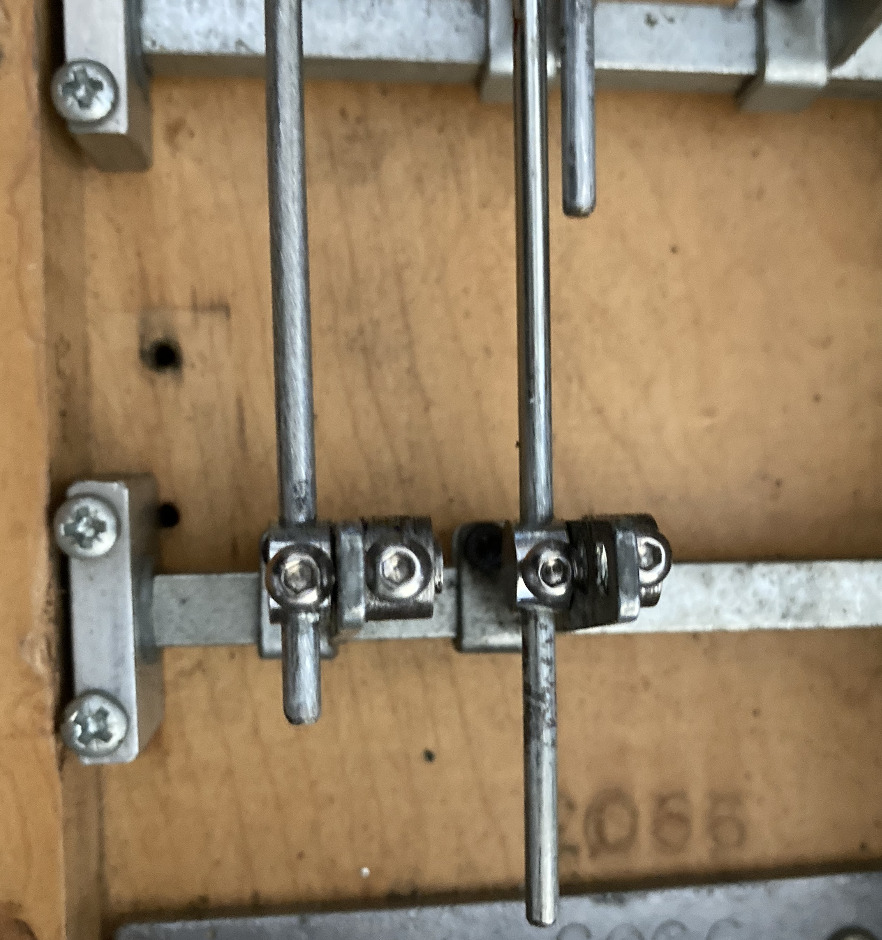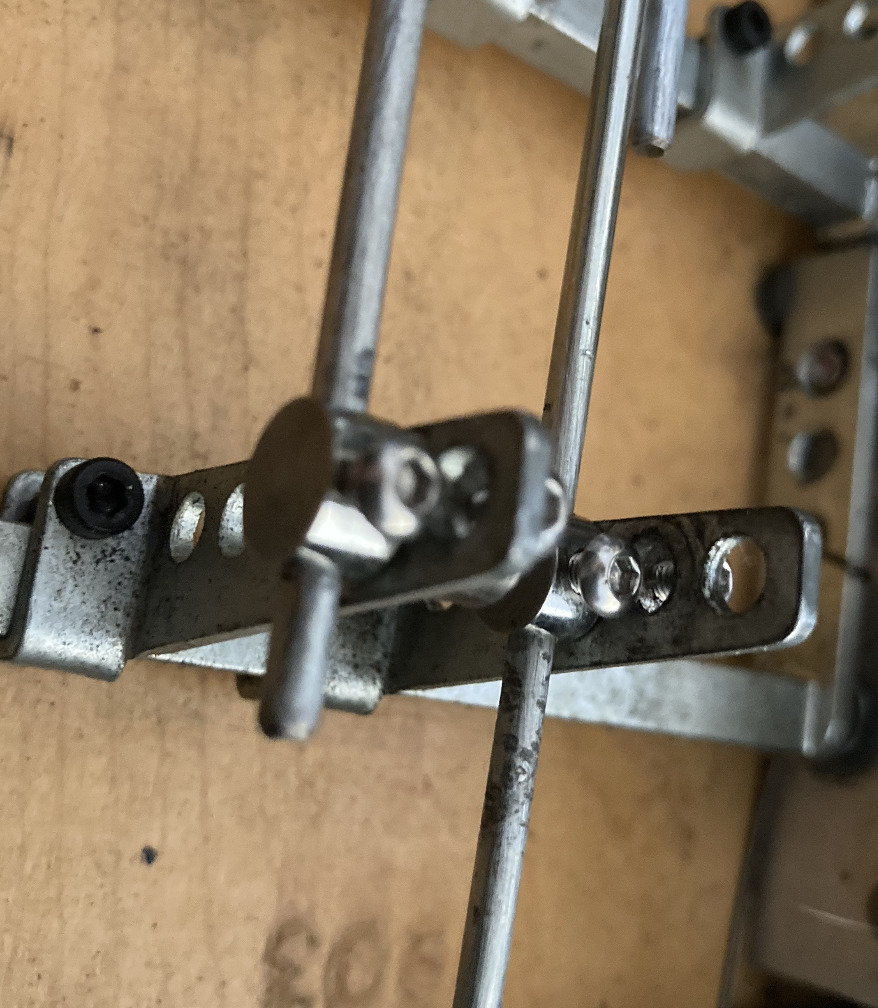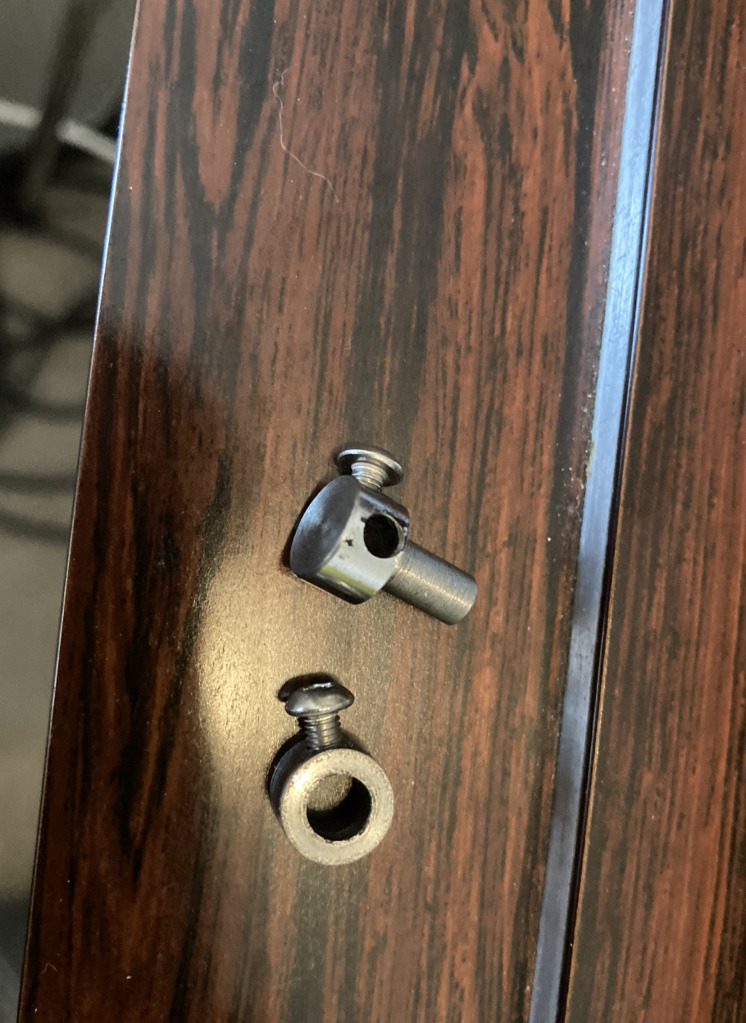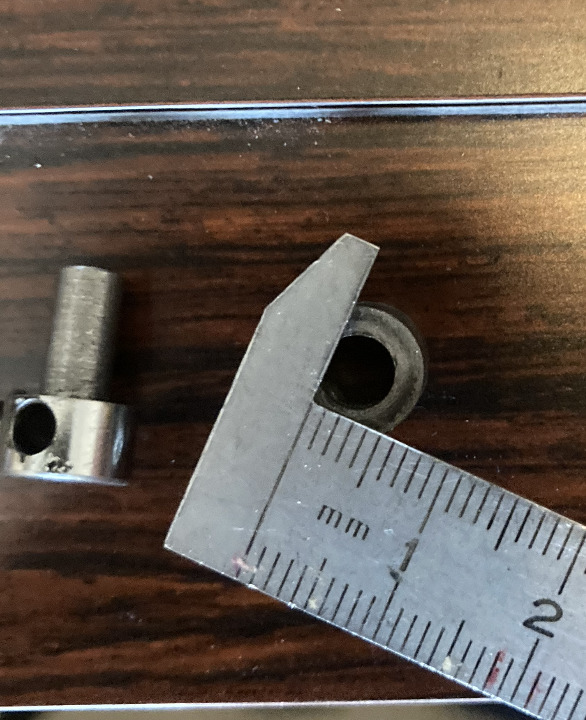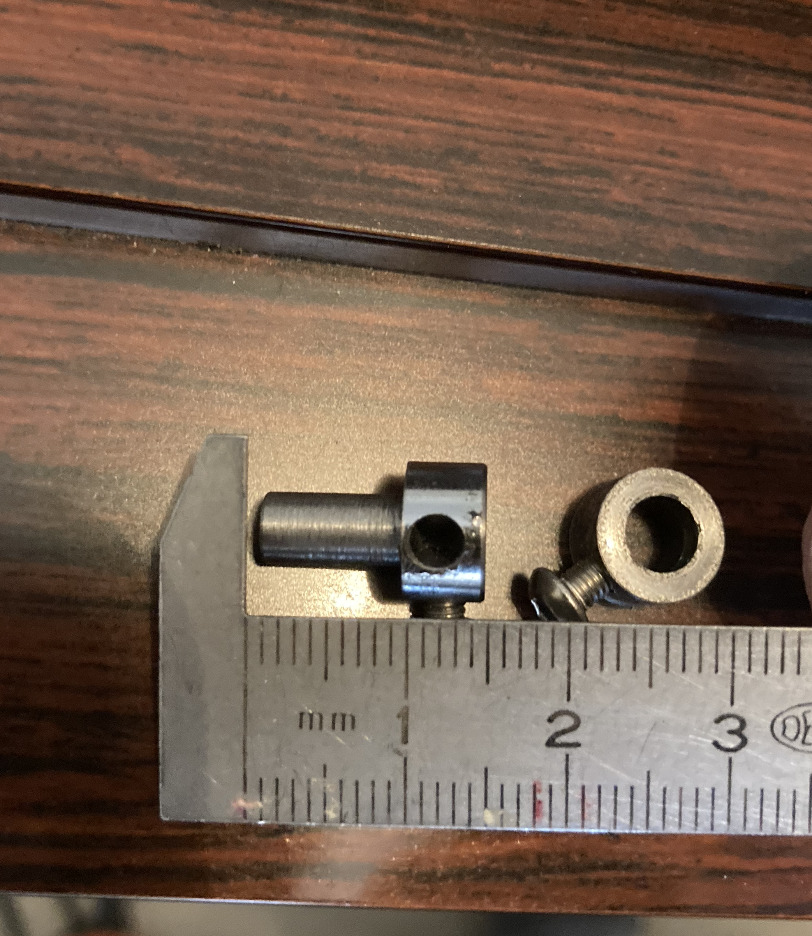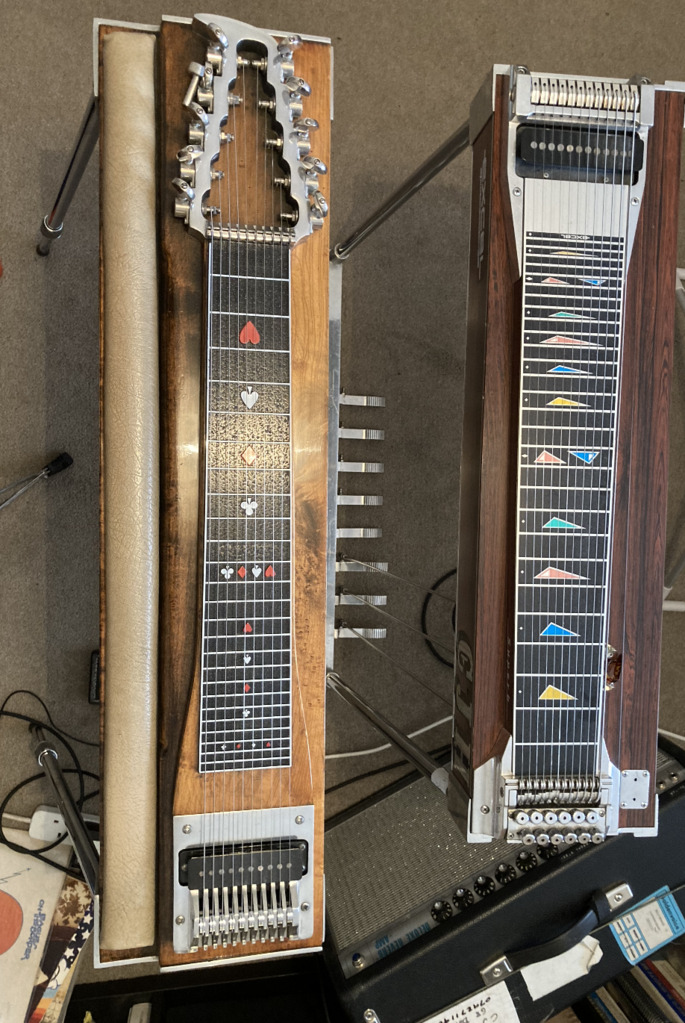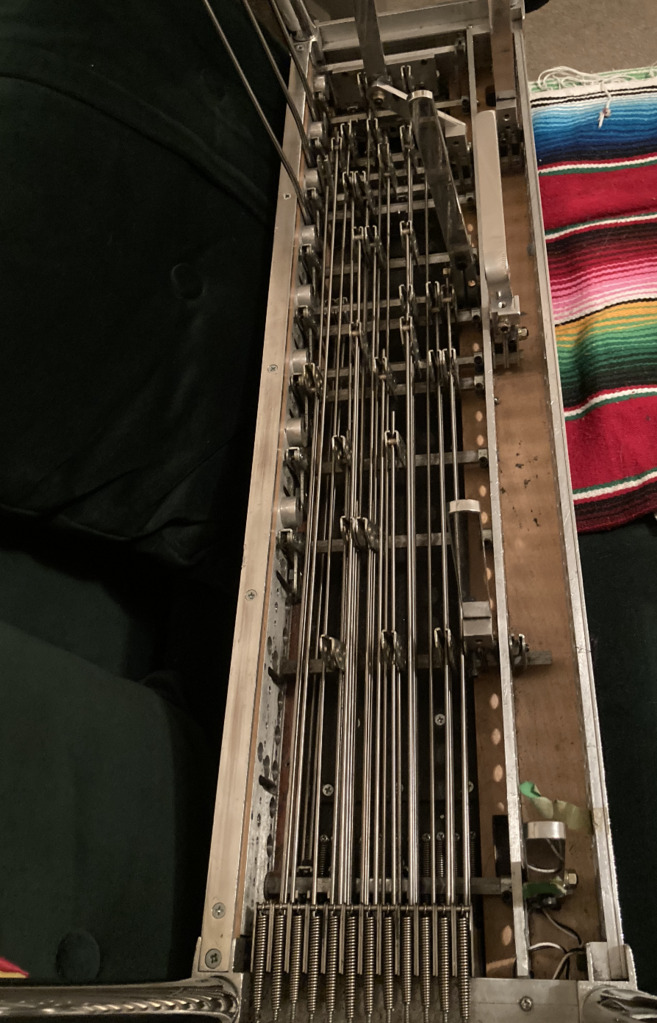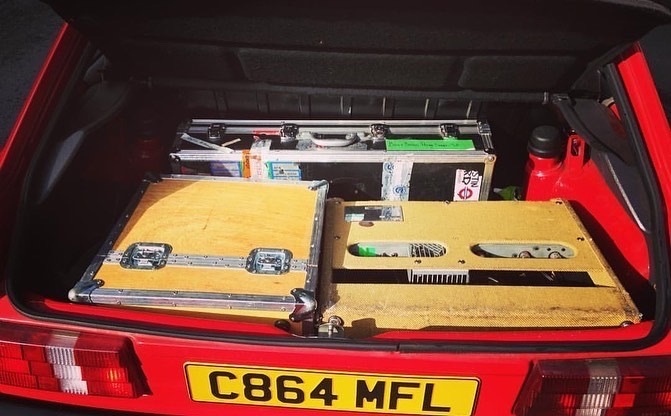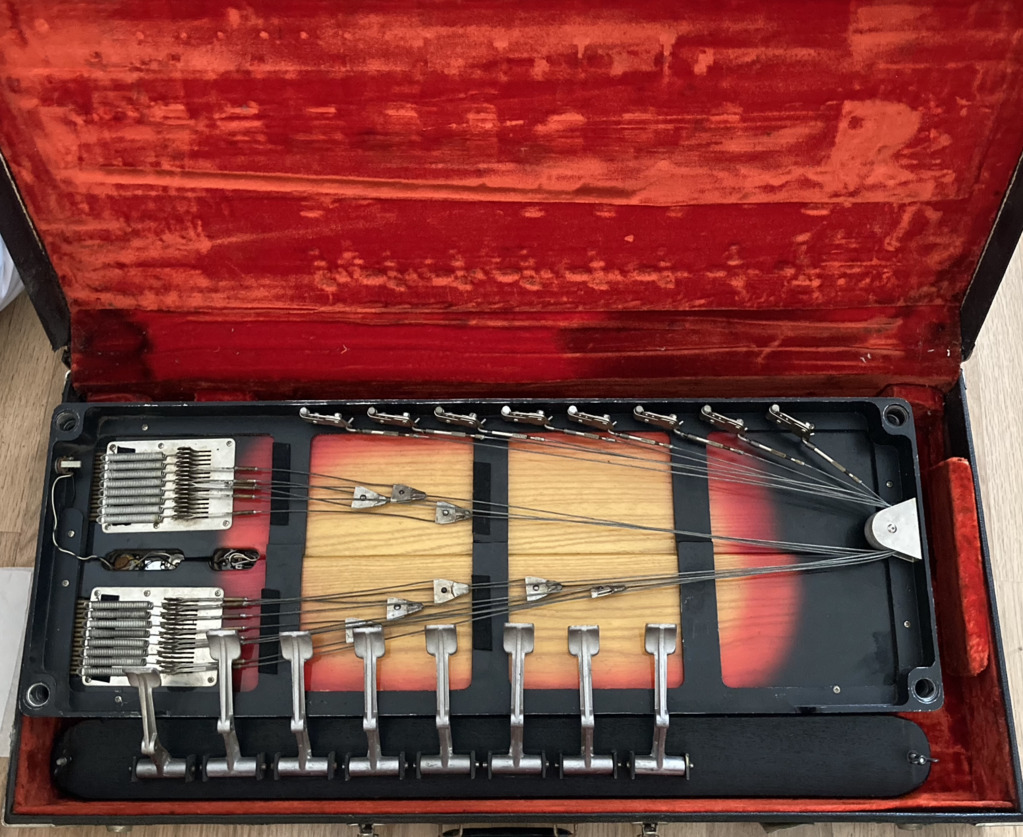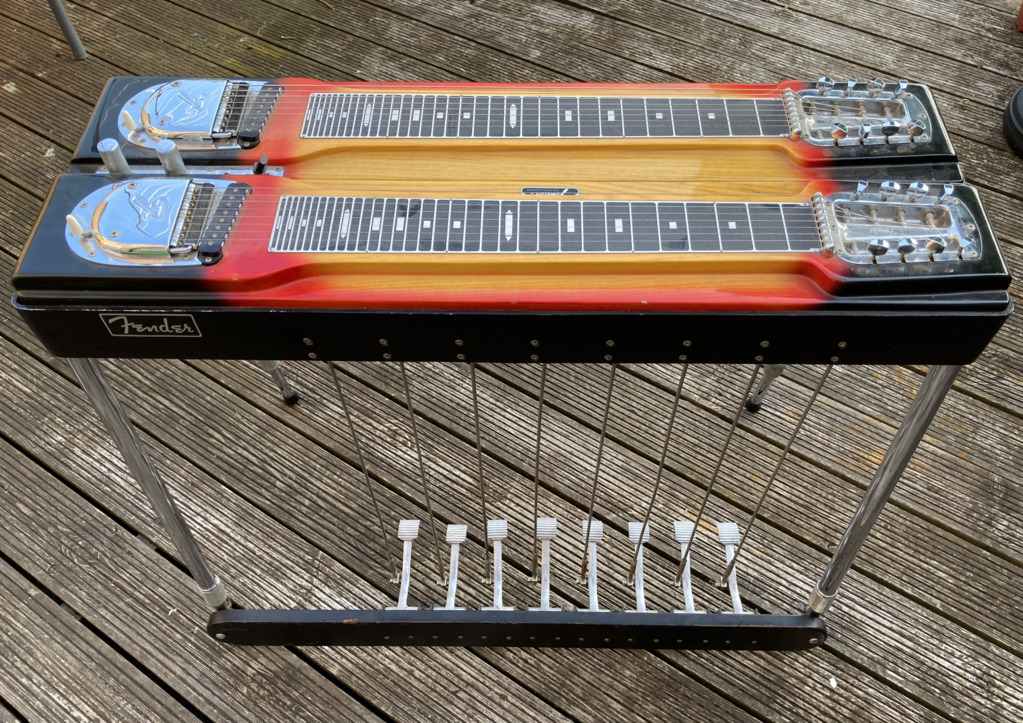A few people might be interested in this. A side from messing with my Capri and Escort, I've recently tried to resurrect a cheap Pedal Steel Guitar I bought in 2015.
If you don't know what the Pedal Steel Guitar is, heres a little video for you...
Here is a video I used to watch a lot before buying one and this is similar to the one i'm restoring.
Playing Pedal Steel and Electric Guitar is what I do for my day job and I could really do with a good second one. Its taken me all over the world and love playing it but as any Guitarists here know, its not unusual for a Guitarist to have multiple guitars... I think I've got about 10 but Pedal Steels are generally quite expensive and hard to come by. This one was really really cheap!
but Pedal Steels are generally quite expensive and hard to come by. This one was really really cheap!
A bit like Cars old ones tend to be harder to use but have more character. New ones tend to be easier to use, more reliable but sometimes have less character. My usual one is a 2004 Excel 12 string which is Japanese so, utterly reliable and low maintenance.
Anyway... Here we have a 1975 Sho~Bud. One of the 362 made between: 12/24/75 - 2/24/76 according to one website. This is either Pro 1 or 6139 (base model). In 1975 apparently there was a base model which was quickly discontinued as it was deemed redundant.
Here is when I got it in 2015...
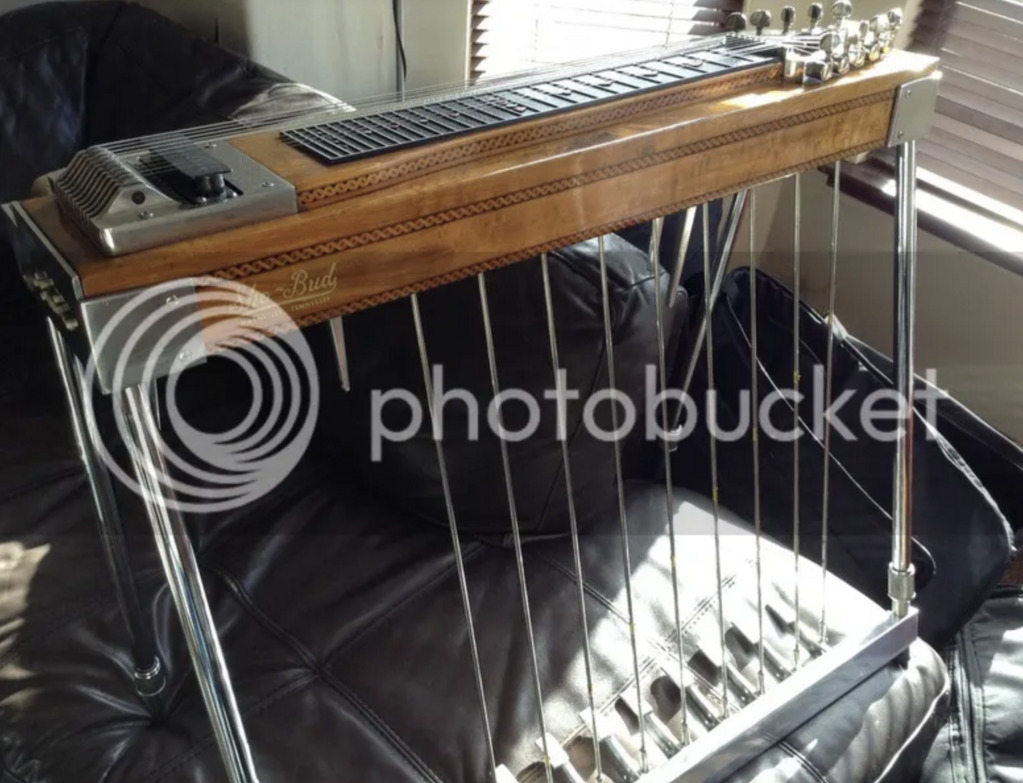
If you watched the video / read the wikipedia you'll see the reason its called the Pedal Steel Guitar is due to the Guitar having Pedals to raise the strings. This instrument originally should have had 3 pedal and 4 knee levers... This one had about 5 levers and 8 pedals. Nothing did anything it should so I'm assuming the origional owner must have had their own tuning that I'll never know. Basically like my Capri... I need to put it back to standard.
There are about 3 types of Pedal Steel "Standard". Its a new instrument so forever changing but it goes something like this..
Single neck 10 string ( this model) 3 Pedals, 4 Knee Levers.
Double neck 10 string: 8 Pedals, 4 Knee Levers.
Single 12 String (my main Guitar): 8 Pedals 5/6 Knee Levers... This is the double neck combined into one neck.
I decided on my way to making it standard to take only a few pedals off and try and make this a hybrid of old a new (like my usual giging 12 string) .
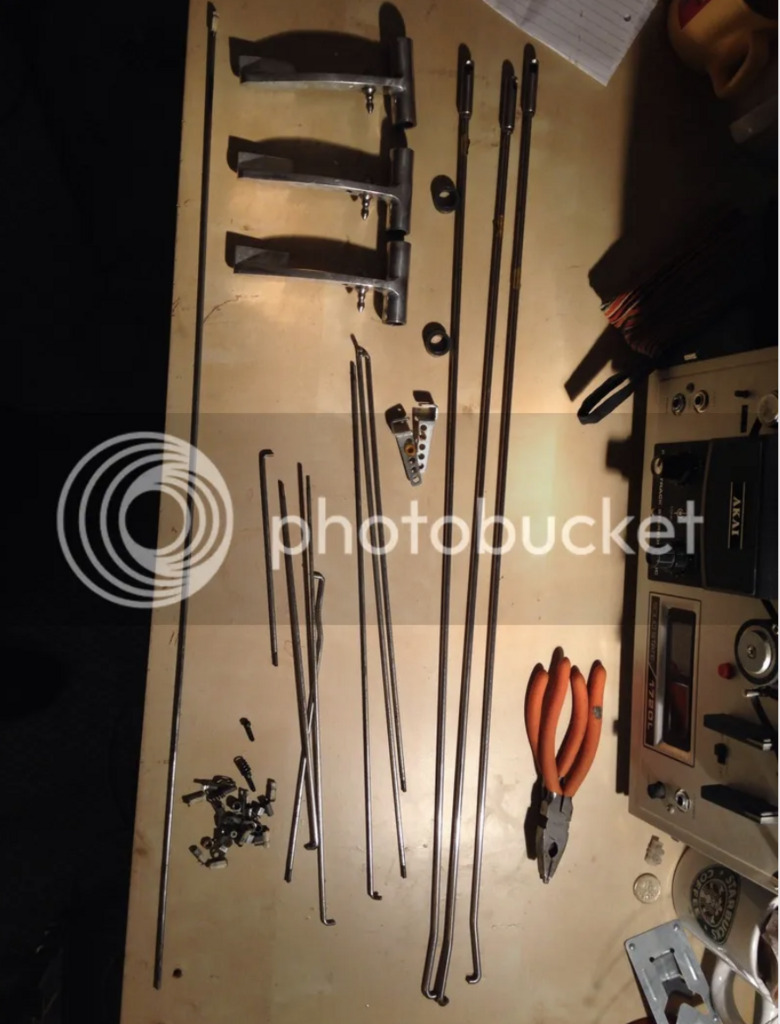
Basically this didnt work and created disapointment/ the long way around to getting this sorted... remember this is 2015. Where the strings end on the right (in this photo) is called the Changer. Its where all the magic happens and makes the pedal/lever vertical movement into a horizontal movement.
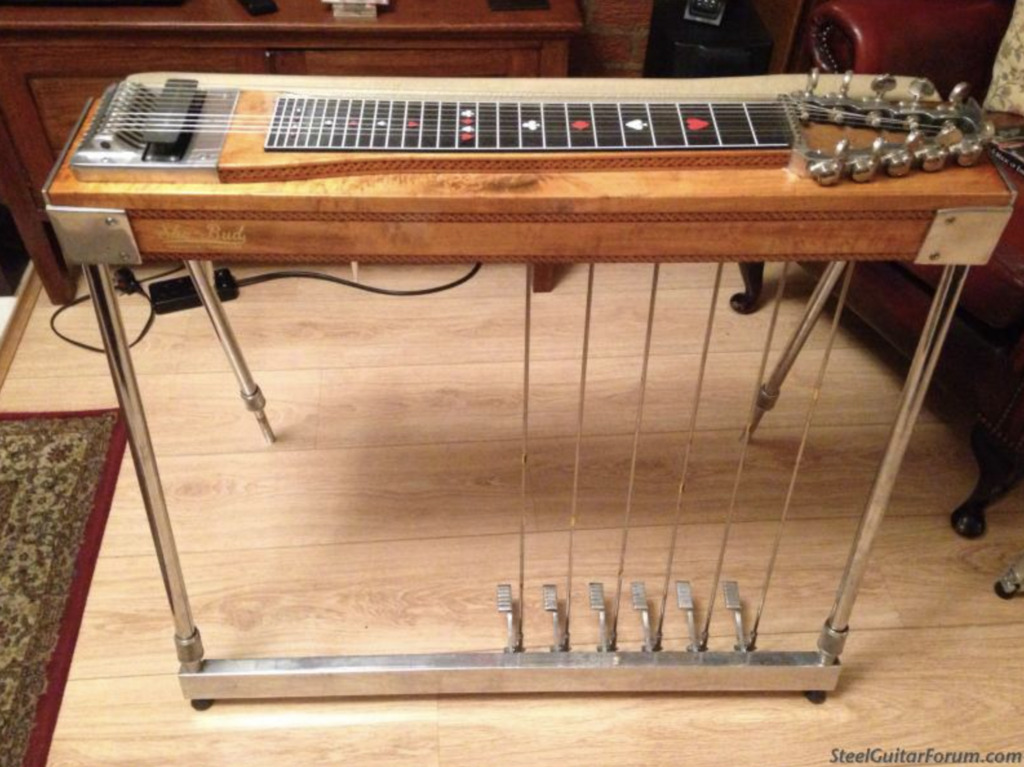
I realise I've not shown underneath and how this works but to try and make this hybrid work I had to use a Triumph Spitfire accelerator cable to make some of the mechanism return. It didnt work very well though.
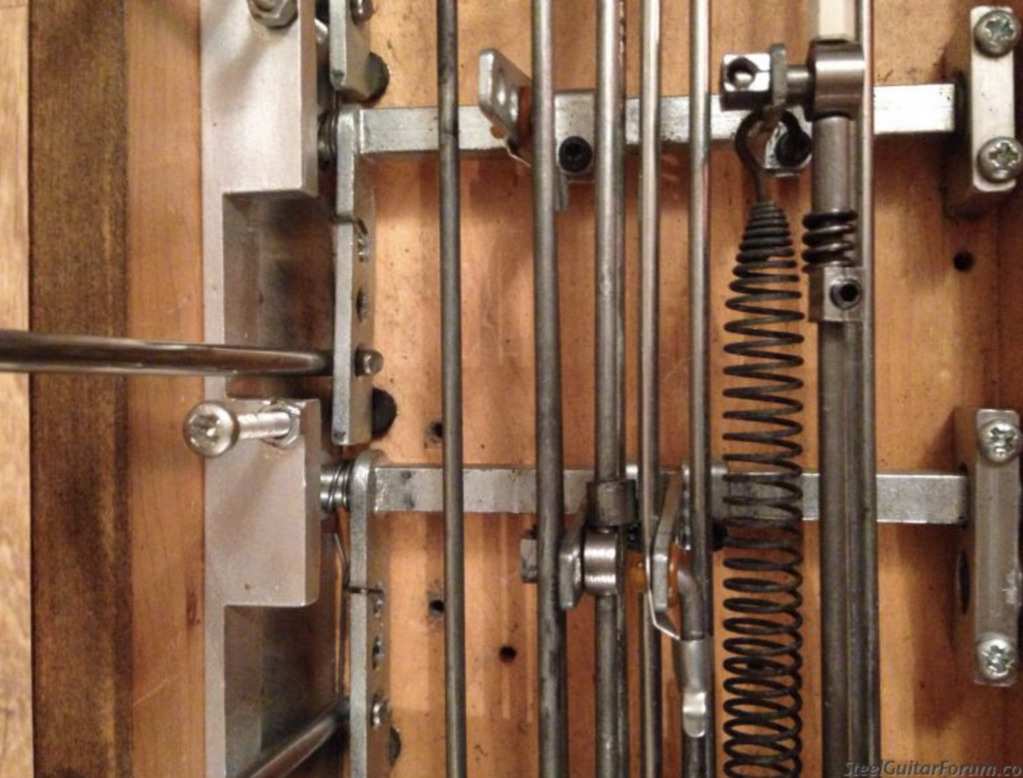
This Steel along with another one that I sold , moved from Manchester to London and back to Manchester but never worked . Next month I have a horrible gig clash where I'm booked for a UK tour with a Nashville artist then have to fly to Ibiza to play with Tony Christie, never thought I'd say that. He's cool and we did one gig in Stoke recently. Heres me loading into a venue in my home town... Last time I played in Stoke I was 18 in a Metal band playing a Gibson SG... how times change!
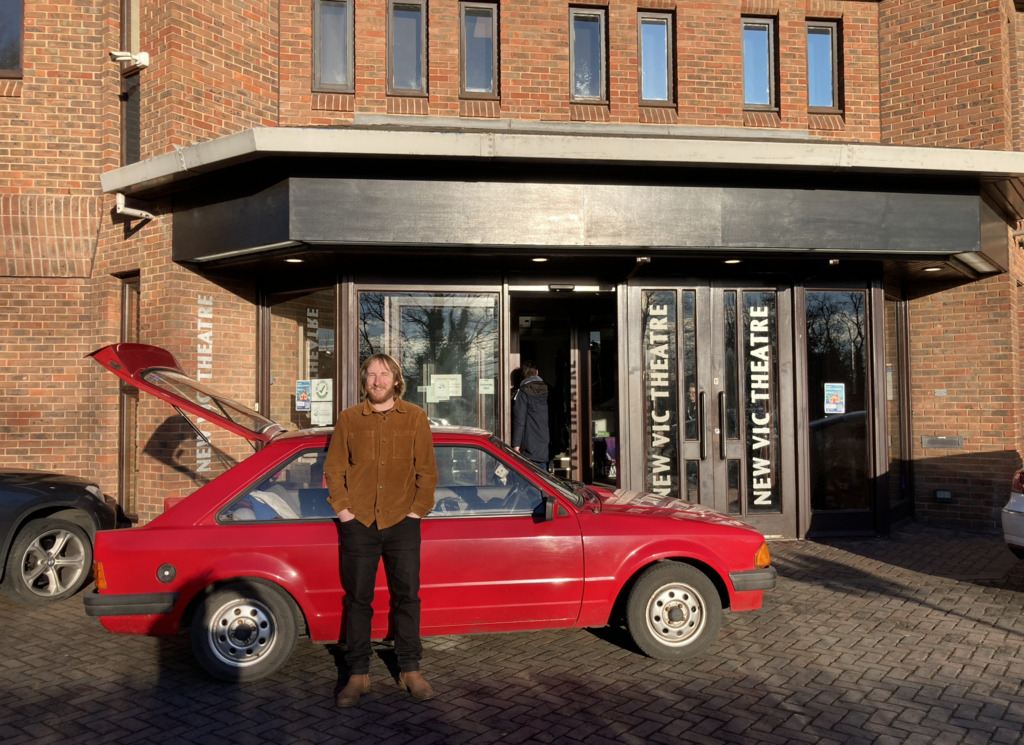
Playing my usual rig.
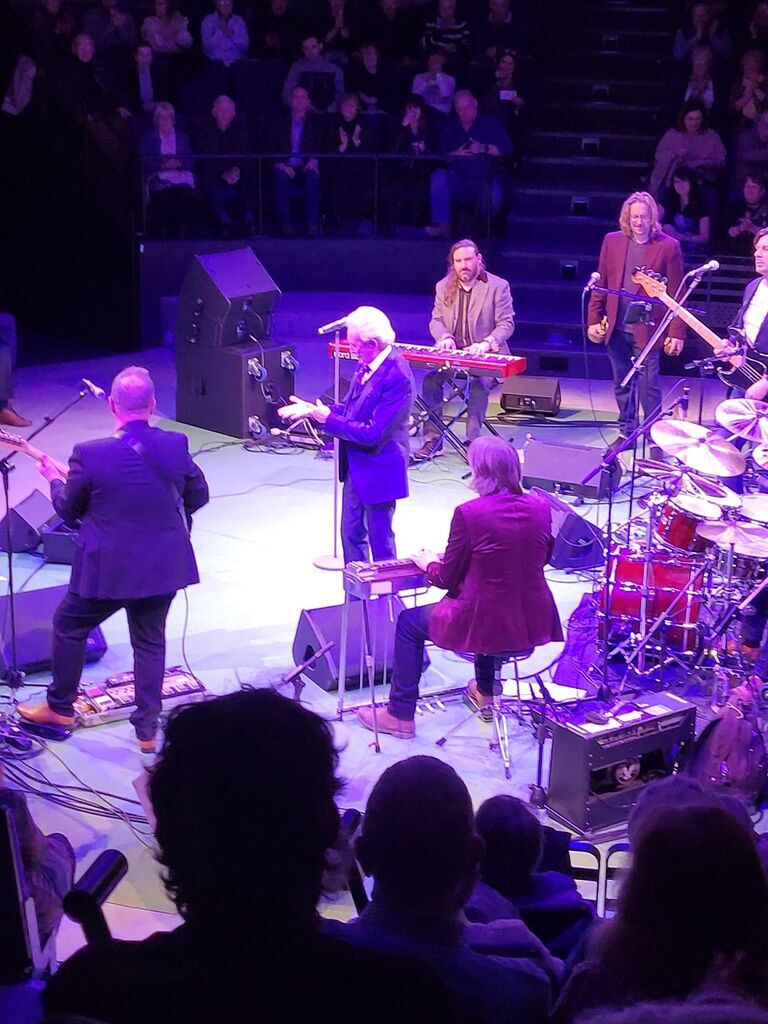
Back to the Pedal Steel in hand.
After realising said clash I decided to pull this old gal out of storage and get it up to scratch as it could be the right guitar for the main tour I'm on and then the usual Steel I play could maybe fly a head of me.
The problem is it likes to go out of tune by the end of one song. This is down to either the return springs underneath not doing their job... this is them.
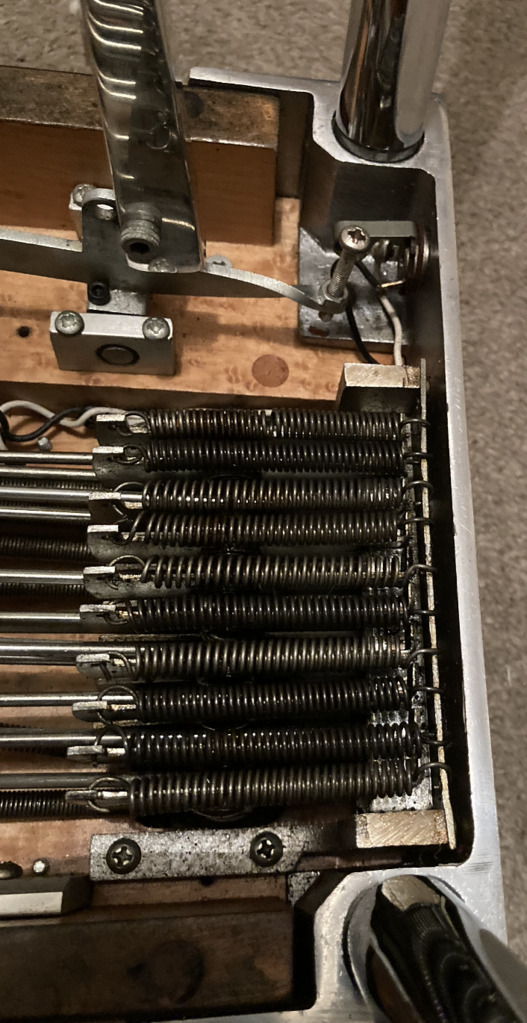
The pedal tuners at the end which are basically nylon hex screws that decide the length of travel for the Pedal and how far it can bend the string.

Or it could have been the rods underneath and the way they connect to the bell crank.
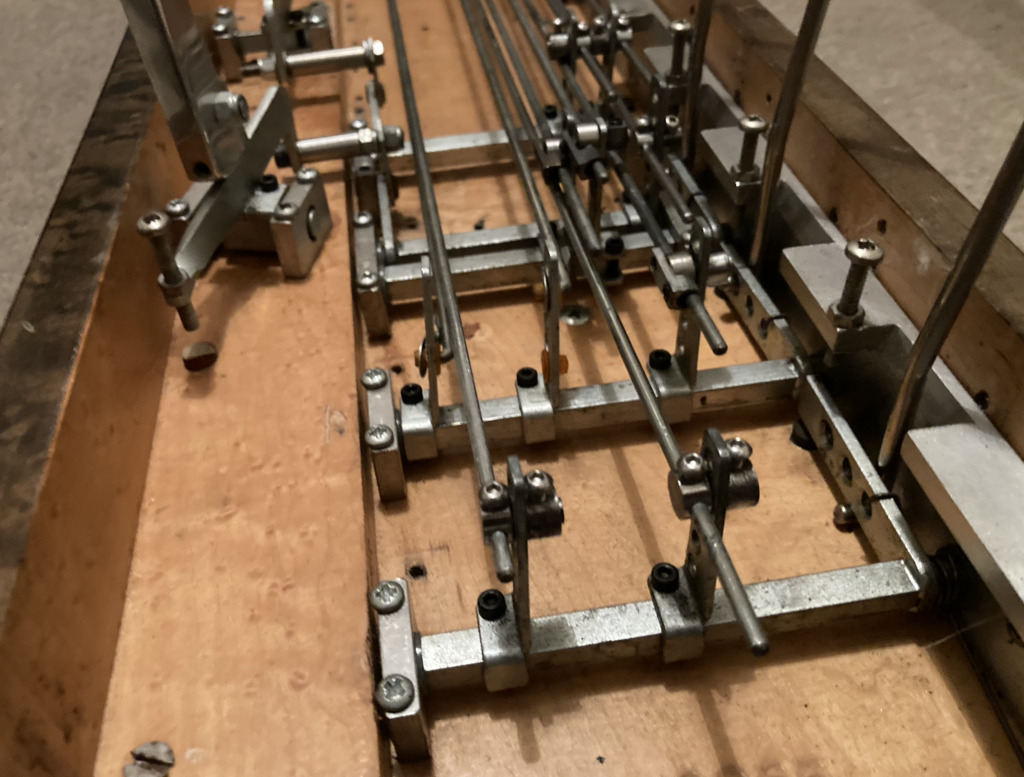
It turns out that it seems to be the way the rods from the tuners are connected to the bell cranks. I had a friend of my dads turned down some new connectors ( I think they are called swivels) on his lathe the other year. After using them on a couple of troublesome Pedals. This has solved the tuning problem so far. Annoyingly I don't think I can ask him to do any more as it took a while for them to come back to me and he didnt want anything for it so I might have to look else where. Hopefully though this is the start of knowing what has been wrong with it and I can get this fixed up nicely in the next few weeks... watch this space!
Pretty happy that I might have a second Pedal Steel Guitar though. Also It goes with my 1979 Capri very well...
Sorry for the wibblepoo photo...

If you don't know what the Pedal Steel Guitar is, heres a little video for you...
Here is a video I used to watch a lot before buying one and this is similar to the one i'm restoring.
Playing Pedal Steel and Electric Guitar is what I do for my day job and I could really do with a good second one. Its taken me all over the world and love playing it but as any Guitarists here know, its not unusual for a Guitarist to have multiple guitars... I think I've got about 10
 but Pedal Steels are generally quite expensive and hard to come by. This one was really really cheap!
but Pedal Steels are generally quite expensive and hard to come by. This one was really really cheap! A bit like Cars old ones tend to be harder to use but have more character. New ones tend to be easier to use, more reliable but sometimes have less character. My usual one is a 2004 Excel 12 string which is Japanese so, utterly reliable and low maintenance.
Anyway... Here we have a 1975 Sho~Bud. One of the 362 made between: 12/24/75 - 2/24/76 according to one website. This is either Pro 1 or 6139 (base model). In 1975 apparently there was a base model which was quickly discontinued as it was deemed redundant.
Here is when I got it in 2015...

If you watched the video / read the wikipedia you'll see the reason its called the Pedal Steel Guitar is due to the Guitar having Pedals to raise the strings. This instrument originally should have had 3 pedal and 4 knee levers... This one had about 5 levers and 8 pedals. Nothing did anything it should so I'm assuming the origional owner must have had their own tuning that I'll never know. Basically like my Capri... I need to put it back to standard.
There are about 3 types of Pedal Steel "Standard". Its a new instrument so forever changing but it goes something like this..
Single neck 10 string ( this model) 3 Pedals, 4 Knee Levers.
Double neck 10 string: 8 Pedals, 4 Knee Levers.
Single 12 String (my main Guitar): 8 Pedals 5/6 Knee Levers... This is the double neck combined into one neck.
I decided on my way to making it standard to take only a few pedals off and try and make this a hybrid of old a new (like my usual giging 12 string) .

Basically this didnt work and created disapointment/ the long way around to getting this sorted... remember this is 2015. Where the strings end on the right (in this photo) is called the Changer. Its where all the magic happens and makes the pedal/lever vertical movement into a horizontal movement.

I realise I've not shown underneath and how this works but to try and make this hybrid work I had to use a Triumph Spitfire accelerator cable to make some of the mechanism return. It didnt work very well though.

This Steel along with another one that I sold , moved from Manchester to London and back to Manchester but never worked . Next month I have a horrible gig clash where I'm booked for a UK tour with a Nashville artist then have to fly to Ibiza to play with Tony Christie, never thought I'd say that. He's cool and we did one gig in Stoke recently. Heres me loading into a venue in my home town... Last time I played in Stoke I was 18 in a Metal band playing a Gibson SG... how times change!

Playing my usual rig.

Back to the Pedal Steel in hand.
After realising said clash I decided to pull this old gal out of storage and get it up to scratch as it could be the right guitar for the main tour I'm on and then the usual Steel I play could maybe fly a head of me.
The problem is it likes to go out of tune by the end of one song. This is down to either the return springs underneath not doing their job... this is them.

The pedal tuners at the end which are basically nylon hex screws that decide the length of travel for the Pedal and how far it can bend the string.

Or it could have been the rods underneath and the way they connect to the bell crank.

It turns out that it seems to be the way the rods from the tuners are connected to the bell cranks. I had a friend of my dads turned down some new connectors ( I think they are called swivels) on his lathe the other year. After using them on a couple of troublesome Pedals. This has solved the tuning problem so far. Annoyingly I don't think I can ask him to do any more as it took a while for them to come back to me and he didnt want anything for it so I might have to look else where. Hopefully though this is the start of knowing what has been wrong with it and I can get this fixed up nicely in the next few weeks... watch this space!
Pretty happy that I might have a second Pedal Steel Guitar though. Also It goes with my 1979 Capri very well...
Sorry for the wibblepoo photo...








